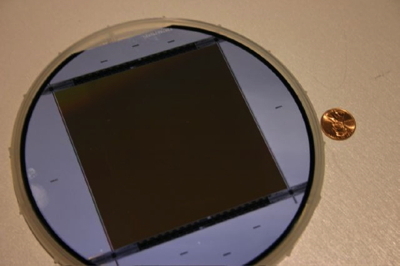


CCD optical imagers are the workhorses of nearly all telescopes. On large apertures, these imagers are invariably mosaics of several CCDs in order to provide a large field of view (FOV), and astronomy has been enriched by their exciting discoveries.
However, such mosaics are not without their drawbacks. Each chip may have slight differences in the shape of its DQE curve, resulting in substantially different color terms from chip to chip. In their study of stars in nearby galaxies, Massey et al. (2006, AJ, 131, 2478) argue that for 1% photometry one really had to treat the 8 chips in the KPNO/CTIO Mosaic Cameras as separate detectors. Because of the gaps between chips, dithering is needed to fill in the gaps. For stellar photometry that then means that one needs to do 8 (chips) x 5 (dithers) = 40x more work than with a single chip and a single pointing. Worse, such instruments greatly compromise the astronomer's ability to do very faint surface brightness studies: the sky brightness is constantly changing with time, and so going down to a small fraction of the sky brightness is nearly impossible over an extended area with mosaics as one dithers to fill in the gaps.
At the time we were kicking around designs for the DCT's optical imager, the first astronomical detector to make use of a full wafer CCD was being produced by Dick Bredthauer's STA lab in San Jaun Capistrano. Such a device has roughly the same physical area as a conventional 8-chip mosaic of 2Kx4K 15 micron chips, and would occupy essentially the entire useful 12.5 arcmin x 12.5 arcmin FOV of the DCT RC focus. For various technical reasons involving the number of amplifiers and pixel sizes, the Bredthauer device was not suitable for our instrument, but we contacted e2v, and learned that they were prepared to make a device of similar physical size but with more suitable characteristics. A mockup of such a device (see image above) was shown at the AAS meeting in Long Beach, CA in January 2009. Several years went by as we sought funding from the National Science Foundation. We were successful (finally!) in obtaining funding in August 2010. We began construction immediately, and when our beautiful chip arrived in June 2012 we were ready to pop it into the instrument. Commissioning on the telescope began in September 2012, and continues to this day.
The advantages of our Large Monolithic Imager over a mosaic of comparable area are three fold: